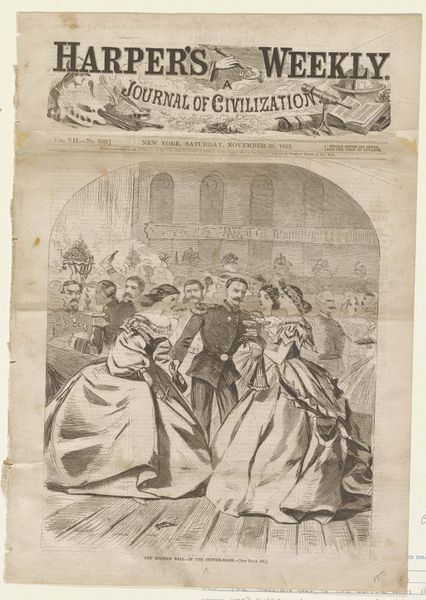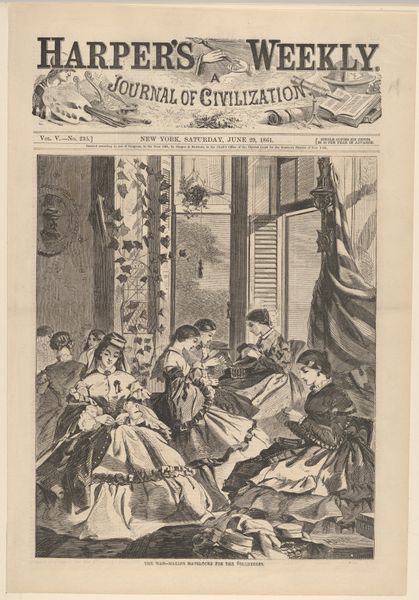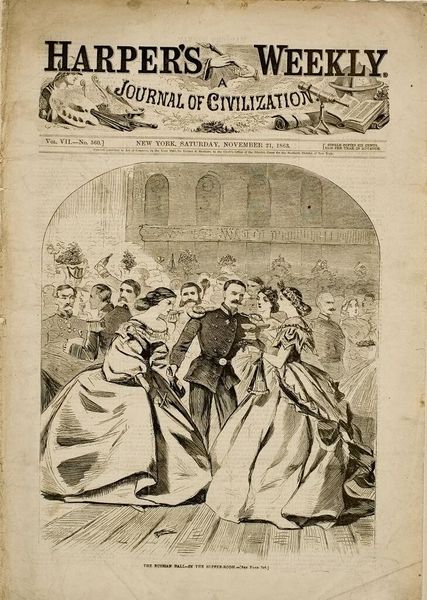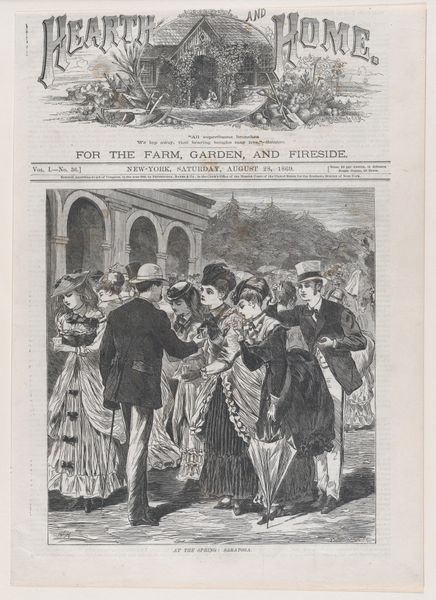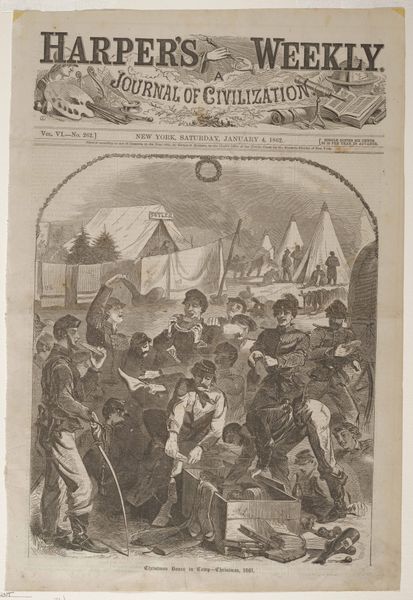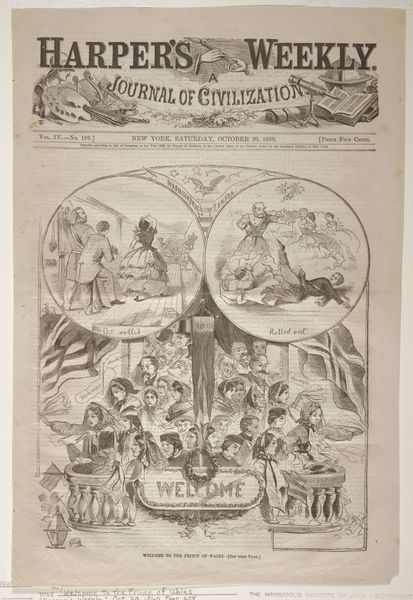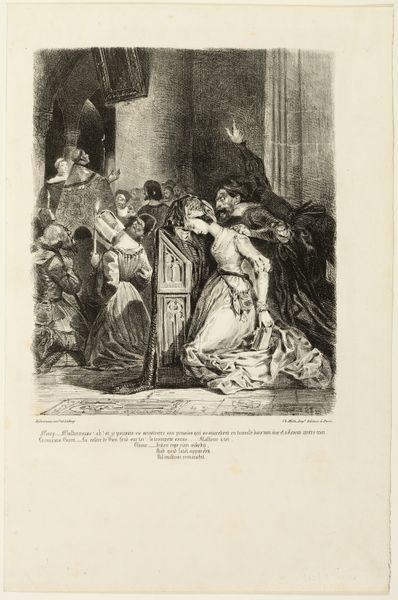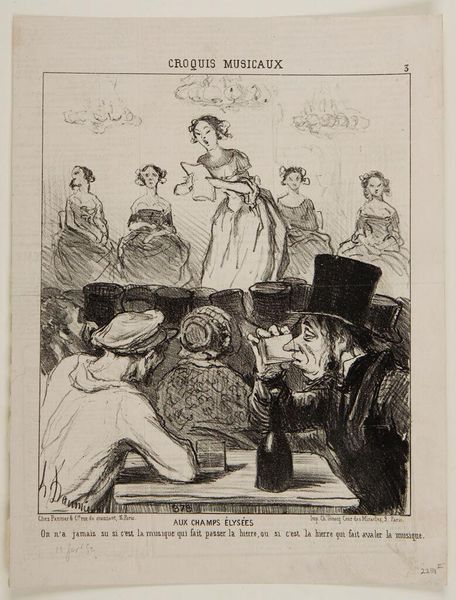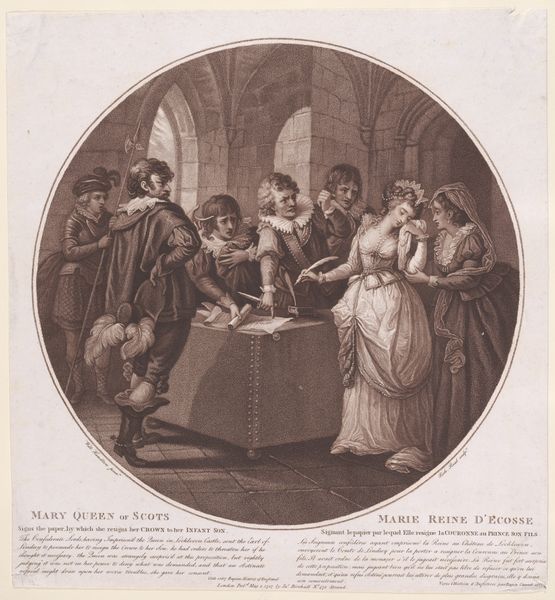
Dimensions: 10 3/4 x 9 1/8 in. (27.3 x 23.2 cm)
Copyright: Public Domain
Editor: Winslow Homer’s "The Russian Ball - In the Supper Room," a wood engraving from 1863, really captures the opulence of that time. The elaborate gowns and military uniforms, it's quite a spectacle! What's your take on it? Curator: Well, let's look at this image as it appeared in *Harper's Weekly* during the Civil War. Consider who it was intended to reach – a largely white, middle-class readership. How might they have interpreted this scene of elite revelry while the nation was fractured by war? Editor: Interesting. I guess it feels a bit tone-deaf to see such a display of wealth when so much suffering was happening. Curator: Exactly. What narratives are being privileged here, and what perspectives are conspicuously absent? Who benefits from this representation, and who is further marginalized? The “Russian Ball” evokes class privilege at a time of national crisis, but, equally important, it is also meant to celebrate diplomatic relations with Russia, who supported the Union. What’s being elided through this strategic focus? Editor: So it's less about simply depicting a social event and more about reinforcing certain power structures and international alliances? Curator: Precisely! Images like these are never neutral. They're always participating in a larger cultural conversation, reinforcing or challenging existing norms. What can art reveal to us about its socio-political moment, and the narratives that were carefully crafted and consumed at that time? Editor: That’s really opened my eyes. I’ll never look at a historical artwork the same way again! Curator: Excellent. And remember, continually question whose story is being told, and, more importantly, whose story is being suppressed.
Comments
No comments
Be the first to comment and join the conversation on the ultimate creative platform.
